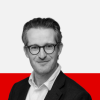When we first wrote about Fidelis’ work to bifurcate itself into an MGA and a balance sheet back in March, there was a high degree of market scepticism.
Many considered the plan over-complex, with too many parties that could not be brought into alignment and too many interdependencies. Clever on paper, but not a deal that you could do in real life.
And so kudos to the firm and its relentless management team for clearing the first hurdle by striking a deal to effect the separation.
The company has been silent around the effective valuation of the business, but multiple market sources placed it at in excess of 1.75x book, which would be equivalent to upwards of $3.5bn of equity value. You have to go back to Amlin’s sale to Mitsui Sumitomo – and a very different world – to find the last time we had a higher valuation placed on a London market and reinsurance business.
Under the complex deal structure, this impressive valuation offers Fidelis’ founding investors partial liquidity, effectively cashing out the notional value they give up in the MGU, but leaving them with their ownership position in the balance sheet.
Of course, in order to secure this valuation – which could not currently be achieved under any other circumstance – the PE investors are having to accept a delay in liquidity on a significant part of their holding.
Another noteworthy feature is that the valuation, while really impressive for a balance sheet business, is actually conservative on the MGA side, likely reflecting the pathfinding nature of the deal.
Figures for the value split between the MGU and the balance sheet are not available, but earlier in the year NSM sold for 1.2x its projected 2022 controlled premiums. At this multiple with $3.3bn of projected 2022 premiums, the Fidelis MGU alone would have been worth $4bn – implying either negative value or very little value in the balance sheet. It is unlikely to have been valued in such a way, allowing us to infer a below market valuation for the MGU.
Now, it is possible that the sum-of-the-parts valuation could effectively fall as a result of the follow-on transaction to create liquidity for investors in the balance sheet, which would happen if the next owners ascribe a lower value to it than this transaction did.

Even if you add this balance sheet haircut, however, it looks like there is easily scope within this kind of structure for significant value unlock by deconstructing the business, with a ~1.5x multiple achievable. And potentially you could push it even higher for copycats if enough confidence could be established in this model over time to reduce the discount on the MGA multiple versus market.
All of this turns on whether Fidelis can secure a successful exit for the investors in the balance sheet. The reorganisation was always intended as a two-step project, and the second was always going to be harder than the first.
Fidelis has refused to comment on any potential paths to liquidity for the balance sheet investors, but as previously indicated an IPO is being explored, according to investor and banking sources.
And here Fidelis will face an uphill challenge in persuading public equity investors that they should fall in behind the balance sheet.
Because while there is no doubt that public investors would be long Fidelis on its current structure, or long Fidelis MGU, the same sentiment is not readymade for Fidelis Balance Sheet.
To secure a valuation that hits the expectations of the PE backers that want to exit, the firm will need to be flawless in the execution of the deal, with slick salesmanship, waterproof answers on alignment and management that commands investor respect.
As much as this, though, there is just such complex alchemy that is needed here to bring this to life and then to keep the system stable long term. Finding the money to back the capital-light vehicle is the relatively easy bit. The capital for the balance sheet is materially harder.
But even if you can do that and you have capital in place for both parts of your deconstructed insurance underwriting business, you then have to keep it sustainable and healthy long term. That requires it to stand up to soft markets, shock losses, leadership transitions, competition, regulatory curveballs – all the things that threaten long-term success.
Managing a stable symbiotic relationship over the long term – while the two boards act as fiduciaries to different shareholder bases – may be the hardest part of this whole bravura experiment.

Significant advantages
The deal will provide the management led by CEO Richard Brindle and staff moving into the MGU with significant advantages.
First, the entrepreneurial wealth creation possibility in this structure post-deal is far greater than under the prior set-up (as is typical in incentive structures for capital light PE-backed businesses).
As well as offering opportunity to incumbent Fidelis staff, this critically offers the business the ability to carry through broker-style team lifts, with equity incentives that should allow the company to outbid balance sheet underwriting businesses.
The relatively low entry multiple on the MGU also creates scope for outperformance purely based on multiple expansion on exit, assuming that the business is sold on to other private equity at the end of a typical three- to seven-year hold.
Second, as Brindle said in his interview with Insurance Insider, there is a hope that moving the underwriting activity into an MGA environment will disencumber leadership of the worst excesses of over-regulation, bureaucracy and pointless governance.
On this telling, death by committee will give way to a pure underwriting focus, which will open up space to be more creative with solutions for clients, including by creating entirely new products (where Brindle has a track record).

But Fidelis’ management team does give things up to get this. As David Howden has acknowledged, an MGA can be worth nothing tomorrow if it loses its paper.
Capital support is the Achilles heel of the MGA and the key place where the model is inferior to a balance sheet, which has permanent underwriting capital it directly controls.
Fidelis Balance Sheet will be an arms-length business with a board that has fiduciary duties to its own shareholders. As such, its support to back all of Fidelis MGU’s underwriting cannot be automatic, and cannot be taken for granted – indeed, it is crucial to its future success that it can say “no” to its sister company.
And even if Fidelis Balance Sheet continues to have full appetite to support Fidelis MGU, there could come a point at which it does not have sufficient capital to fully back that underwriting – at which point Fidelis MGU would need to find other capital, a development which could complicate the exclusivity provisions.
Building the case for the IPO
Fidelis and its investment banks will need to push uphill with the IPO. An early canvass of both investor and banking sources exposed scepticism which will need to be overcome, or priced into the offering.
Investor sources expressed concern about Fidelis Balance Sheet’s concentrated distribution and the degree to which its value was reliant on a single external contract. Despite the multi-year nature of the arrangement, this creates exposure on the balance sheet side to another capital provider offering to support the MGU’s risk at more attractive terms – with this the doomsday scenario for the balance sheet.
They also stressed that it felt like the real agency, power and management talent was concentrated in the MGU business, along with the key distribution relationships, which creates scope for the economics split to favour the MGU.
In addition, sources suggested that investors were wary of backing a Fidelis enterprise without Brindle’s direct involvement.
An early canvass of both investor and banking sources exposed scepticism which will need to be overcome, or priced into the offering
Last of all, there was concern around the long-term alignment of interest. One source suggested that the private equity capital in the MGU would favour “growth at all costs” and said that there was scope for misalignment to emerge with the interests of the balance sheet at the part of the cycle where it will need exposures to be managed defensively.
With no real scope to build a franchise in Fidelis Balance Sheet, sources expect it to be pitched to investors as more of a pure financial investment, offering an annuity-like dividend at high levels and exposure to risk that is non-correlated to broader financial markets. Sources suggested, however, that there is already a crowded field for such dividend stocks in insurance with 6%-11% yields available from established names.
Fidelis has refused to address the possibility of an IPO. Regulatory rules prevent it from doing so.
But it has put its case around ensuring alignment.
It includes (1) a significant investment from both management and the other MGU investors in the balance sheet; (2) having a meaningful proportion of MGU earnings driven by profit commissions; (3) a multi-year capacity arrangement; and (4) the long-standing relationships between the MGU management team and the balance sheet management team.
Fidelis Balance Sheet will have a chance to make the case to investors, but the starting expectation in banking circles is that the business would trade at a discount to book – although there was significant disagreement between sources on how big a discount it would attract.
Indeed, given this some banking sources believe that Fidelis Balance Sheet may pivot to a private deal, with the entry price and return profile potentially highly attractive to a long-term financial owner like a sovereign wealth fund or a pension fund.
The deconstruction of the underwriting part of the value chain
There is no doubt that this reorganisation could become the posterchild for those who believe in the structural shift to MGAs, and the potential latent value that can be released via the deconstruction of the underwriting part of the value chain.
It provides a reference point and template for bankers, equity backers and debt providers. It is always easier to re-run something than to do it for the first time.
And it seems likely that this deal will be dissected minutely at board level at most (re)insurers. And, certainly, those that are privately held with backers thinking about an exit will look the most closely.
There are many who remain deep sceptics, but those who have been short Brindle have always lost
But right now, this is a bold gambit that is still in flight. For a raft of emulators to emerge, Fidelis would likely need to land the IPO – or a private sale – of the balance sheet to demonstrate that there is an investor base that would ascribe real value to this part of the business in the deconstructed model.
Those weighing start-ups will also no doubt be watching closely, although the simpler path for those with a blank piece of paper is obviously the pure MGA model.
A fascinating period now ensues while we wait for the IPO and watch its progress. An imminent launch is unlikely given the IPO market and the broader macro landscape – so there is likely a wait before we know the outcome of this bold reorganisation.
There are many who remain deep sceptics, but those who have been short Brindle have always lost. If anyone can pull this off, he can.


